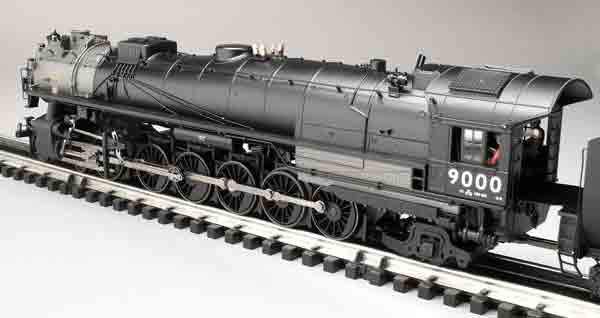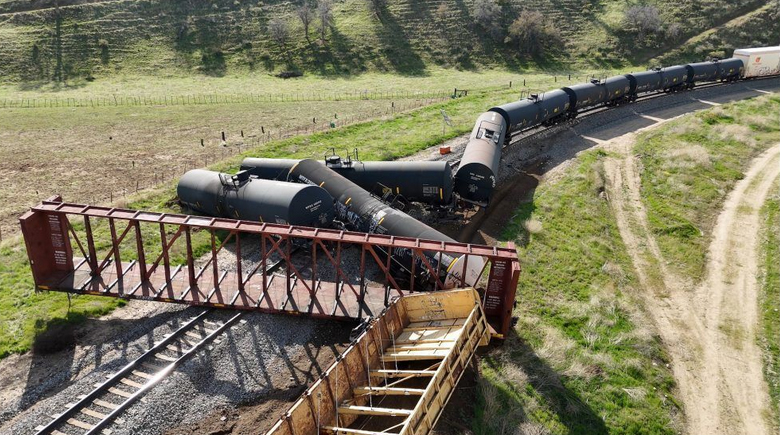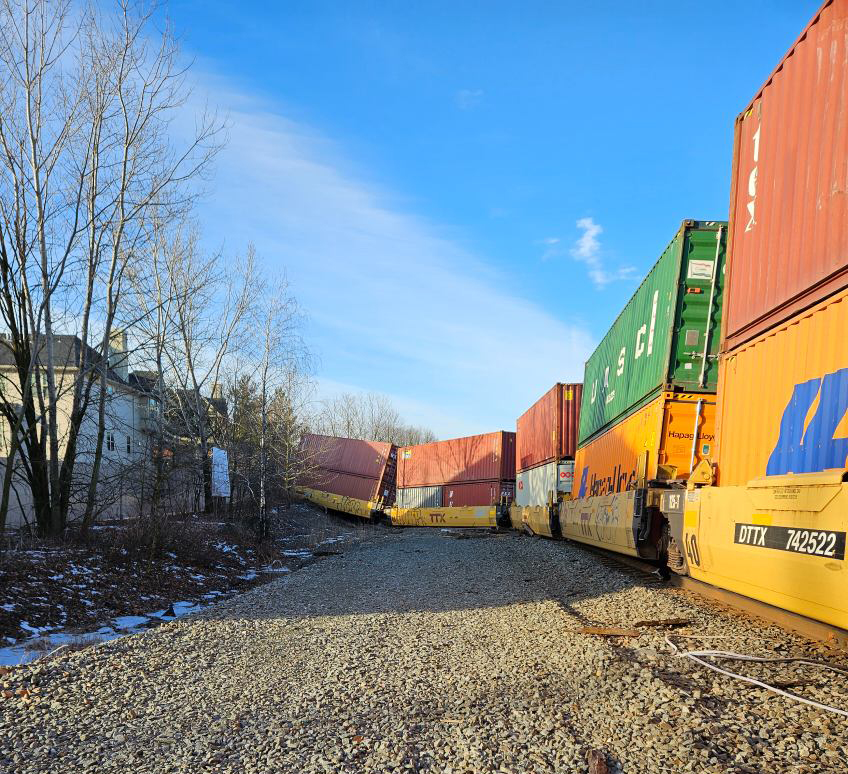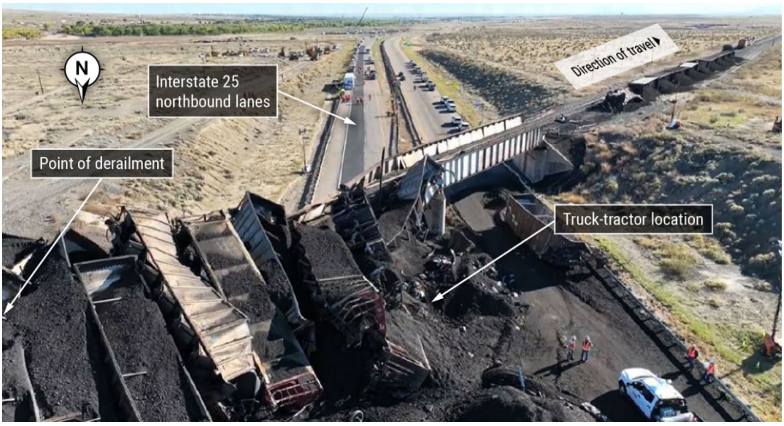The O gauge world recognizes this with models of the FEF-class 4-8-4, the large 4-6-6-4 Challenger, and the giant 4-8-8-4 Big Boy. Now MTH is cataloging another giant of the rails, the 4-12-2.
Designed to handle long freight trains across the flat prairies, the UP’s
4-12-2s differed from most American steam power by having a third cylinder that drove a second drive axle. This drive system, the conjugated valve gear, was invented by noted British locomotive designer Sir Nigel Gresley.
Americans will know of Gresley for his development of two great London & North Eastern Ry. designs: the A3-class 4-6-2 Pacifics to which the Flying Scotsman belongs, and the A4-class Pacifics to which the Mallard belongs.
Needless to say, American shop crews didn’t care for maintaining an otherwise inaccessible third cylinder. Between 1934 and 1940, eight of the 4-12-2s had their Gresley gears removed and replaced with a double Walschaerts valve gear to operate the valve for the inside cylinder. These were identified by their plain smokeboxes, since the pumps mounted on the nose had been moved to the sides to better balance the locomotive’s weight distribution.
The Union Pacific ordered 88 of these monsters, which were built by Alco between 1926 and 1930. Today, only a single example of the 4-12-2 locomotives survives.
Opening the box
This O gauge model looks massive, probably because it has the same number of drive wheels that a Challenger possesses, just in a more condensed space. It has wheels, wheels, and more wheels to spare. Setting aside the imposing nature of the piece, this is an amazing example of the modeler’s art.
The face of the locomotive is as fierce as any I’ve seen, with compressor pumps, headlight, bell, front engine number plate, marker lights, handrails, and even steps surrounding the smokebox. The pilot itself has the usual adornments of cables, dummy coupler, and uncoupler arm.
Beneath and behind the steps running up from the pilot, you can clearly see the gear work for the third cylinder. Even if it didn’t function (which it does), this is a terrific detail item. The running gear is strictly industrial strength and looks wonderfully and impossibly long for all those drive wheels! Interestingly, the flanges are on the first and fifth sets of wheels, with two, three, four, and six being blind (flangeless).
Underneath the roofwalk you’ll find add-on piping/conduit, reverse gear, tanks (with nomenclature noting “Hydro test 11-11-45”), and drain lines.
The boiler’s tooling is clean, with subtle cast-in boiler bands and, where appropriate, cast-in bolt, seam, and latch detail. For me, the definitive detail point topside is the sand dome with six add-on sand lines dropping down on each side. You’ll also find add-on handrails, popoff valves, a whistle, and a train number board.
The locomotive cab features crew figures, a well-decorated backhead, interior illumination, opening side windows, the time-honored firebox glow, and opening rooftop hatches. What makes these hatches different from hatches on other models is that they raise upward rather than sliding backward or forward to open/close.
There is a drop deck at the end of the cab, designed to overhang the lip of the tender. The locomotive mates electrically with the tender using a drawbar. This is a major improvement over the old-style thick wire tether.
The tender is a six-axle rig with die-cast metal trucks and couplers, brake chains on the trucks, and a coil coupler affixed to the rear truck. The ProtoSound 2.0 electronics are housed in the tender. The battery charger port, volume, and smoke-unit controls are located beneath the water hatches. The three/two rail conversion controls are found on the bottom of the tender.
Paint application was superb.
On the test track
When in motion, this MTH model is as impressive as any of the giant articulated models I’ve ever had on my railroad. During the first lap or two around the track, I sucked in my belly as the massive 4-12-2 slid through my O-72 curves. It didn’t hit anything, but there were a few vehicles I moved a bit farther from the track – just in case!
The sound system is deep, throaty, and robust, and the smoke unit will fill your train room with a haze in no time flat. The whistle sounded great, and the bell will certainly get your attention.
The locomotive was very responsive to changes in speed, and it looked impressive as heck rattling along on the point of an intermodel train!
Our low-speed test average was 2.1 scale miles per hour, while our high-speed average was 43 scale mph (I’m convinced, however, that with enough straight track I can get this baby moving even faster!). Drawbar pull was a solid 2 pounds, 9 ounces.
Though it’s a bit tough to spot when under way, while we were running the model on our stationary roller base the syncopation of the gear for the third cylinder was pretty clear. It was neat watching the movement and speculating on the relationship between the three cylinders on the real locomotive when it was chugging along the line.
Subscribers can check out our video of the 4-12-2 on our test-bench roller base by going to ClassicToyTrains.com
The 17-inch-plus long model has just two power pickup rollers, and they are 5¾ inches apart, both situated on the locomotive itself. The tender-mounted coil coupler functioned well.
This is a magnificent model that will, unfortunately, be limited by the diameter of the curve needed to operate it. If your layout has O-72 or wider diameter curves, it will provide you with distinctive pulling power and quite the splendid show!
Price: $1,195.95 (no. 20-3293-1)
Features: O-72 operation, die-cast metal construction, ProtoSound 2.0, tender-mounted coil coupler, three-to-two rail convertible
Staff comments: Looks terrific, sounds rock solid – Bob. Outstanding choice of a unique steamer – Roger. The third-cylinder linkage action is absolutely fascinating to watch. – Carl.















I very much enjoy the excellent product reviews each month. Thank you for the good work.
I am wondering about the 17 inch-plus length mentioned in the above review of the MTH 4-12-2. I have an MTH Chicago and Northwestern 4-6-4 E4 that measures a little over 27 inches for the total length of the locomotive and the tender. My Williams J class Hudson 4-6-4 (Lionel clone) is about 24 inches overall for the engine and the tender. Is this MTH 4-12-2 really only 17 inches long including the locomotive and the tender, or is the seventeen inches just for the locomotive only? Please clarify the length of the locomotive and also the tender.
One other thought that pertains to all of the past reviews. When the subject steam locomotive (usually black in color) is put on the treadmill, not much detail shows up due to inadequate lighting on the subject. It would help to have a light source down lower that would better illuminate the side of the subject to bring out more detail. As is, it just looks like a big black lump.
Thanks for asking for my input. Regards.
Lou Turf
That was an error we didn't catch on the chart. It was 25 (FRM) and 27 inches (C-T-C).
OOOHHH!!! For only a big layout!
Will this engine run with the Lionel Train Master Control?
Awesome product! Great review! Thanks!